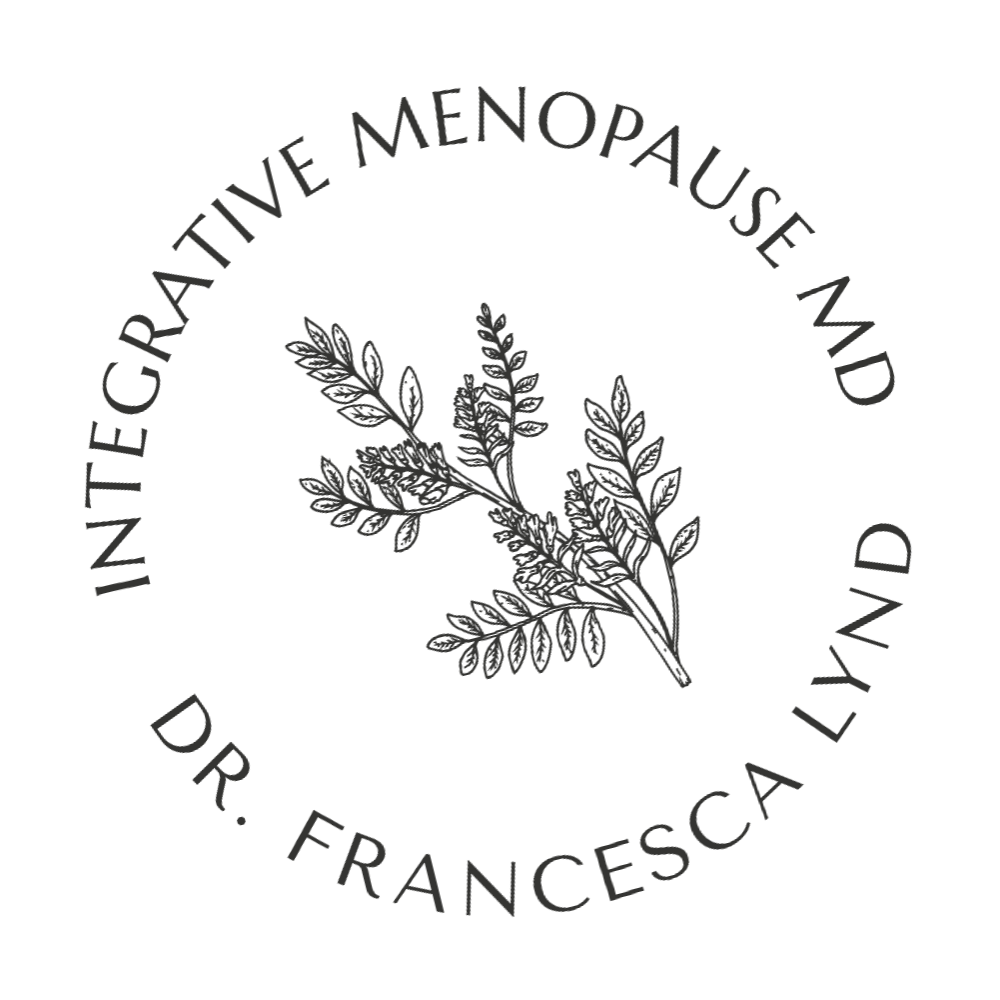Menopause and Hair Loss: What Every Woman Needs to Know
May 15, 2024
Hair loss. It’s a topic that strikes a chord with many women during the menopause transition and beyond, triggering an emotional response like no other.
Perhaps you’ve found yourself spending extra time fussing over your hair, trying to conceal the signs of thinning.
You are not alone. With over 80 million Americans experiencing hair loss, it's a common concern, affecting over 50% of women at some point in their lives. On average, we lose 50-100 hair fibers per day, but menopausal hair loss brings on a whole new challenge. Losing handfuls of hair in the shower or in your hair brush is sure to grab your attention. But what causes this and what can you do about it? Lets explore causes and treatments for menopausal hair loss.
But first the necessary background:
Understanding hair growth: it’s 4 step cycle…
“Growth”
This is when the the entire hair shaft grows from the follicle to the end. In the scalp, this occurs over 2-8 years for most people but the time it takes, steadily declines with age (and sometimes precipitously with menopause). The actual number of follicles also declines with age.
“Recession”
Simply meaning the hair follicle regresses over the course of approximately 2 weeks.
“Rest”
There is no hair growth over this 2-3 month time period. The current hair growth lays dormant in the follicle while new hair is hopefully beginning to develop in the follicle. Less than 10% of scalp hair stays in this phase at any one time.
“Shedding”
New hair pushes out old hair.
So if you have noticed hair loss and have gone to your doctor, you know that doctors refer to it as alopecia. Alopecia comes in 2 forms—scarring (permanent) and non scarring (reversible).
The causes of hair loss during menopause are multifaceted. Causes may include environmental exposures, autoimmune conditions, rapid weight changes (think injections for weight loss or fasting), thyroid dysfunction, changes in sex hormone levels and stress inducing shifts in cortisol. That’s just to name a few. Unfortunately, the frustration of seeking help can be compounded when medical professionals don’t take the issue seriously.
Non scarring alopecia can manifest as focal (patches), diffuse (thinning) and patterned (symmetrical loss on the sides, front and top of the head).
Scarring alopecia presents additional challenges.
In postmenopausal women, a scarring frontal fibrosing alopecia (FFA) is a common and not well understood cause of hair loss. Some suggest the loss of estrogen contributes to this but estrogen replacement does not often seem to reverse it (though early menopausal hormone therapy may help to minimize it). Research has shown that FFA is associated with other autoimmune disorders. Also, the scarring category includes hair loss from hair styling products, or styling techniques. These also may have an autoimmune component. Hair color applied to the scalp can destroy the hair follicle. So more moderation is advised, and apply only to the fiber, not the skin. A common culprit for women with FFA (but poorly understood) is our self care products. Nanoparticles in sunscreens and moisturizers should perhaps be avoided if possible. Download the EWG Healthy Living app to help you choose your products with more consideration. The Environmental Working Group designed the app so that you can scan products as you shop.
If you have gone to a doctor about hair loss, you may have left frustrated. Often, hair loss is not taken seriously once it has been determined that it is not related to a life threatening autoimmune condition or severe illness. Few options are typically provided. Perhaps a biotin supplement and a different shampoo?
What to do?
Clearly it is imperative to have hair loss evaluated for those life threatening conditions. But once these are ruled out, we must not discount the impact of non life threatening hair loss. Hair loss can significantly impact quality of life. Worsening depression, anxiety, and social avoidance may ensue. It is amazing how “emotional” our hair follicles can be! The added stress can exacerbate the hair loss and thus a cycle develops.
Testing for underlying causes, such as nutrient deficiencies, thyroid dysfunction, hormones- including testosterone and cortisol and an omega-3 fatty acid test may be helpful. It needs to be stressed that menopausal hair loss is multifaceted. This means that more than one trigger may be at play and women may have more than one risk factor or condition that increases their susceptibility. This needs a more holistic approach!
Avenues worth exploring...
- Nutrient deficiencies
Beyond a simple multivitamin you really need to work with a knowledgable health care provider to stay safe. You and your provider can test for some of these nutrient deficiencies rather than randomly taking supplements of unknown benefit. Insufficient iron, zinc, B2 (riboflavin) and vitamin D may be part of the problem. Biotin is a common recommendation but taking the supplement will not help if a deficiency is not present (though it may still help your nails). Keep in mind, biotin can impact several labs so make sure you tell all your doctors if you are taking biotin (ER and urgent care doctors as well).
Some supplements can cause hair loss. DHEA is one supplement to think about. High doses of selenium and Vitamin A may also cause hair loss.
- Pharmaceutical side effects
There are many pharmaceutical meds that have hair loss as a known adverse event and many are quite commonly prescribed. So check with your doctor to see if one of your prescriptions is a potential trigger. If so, there may be an option to change the prescription. In most cases, drug-related hair loss occurs about 3 months after starting the drug. No supplement will improve drug related hair loss.
- Stress
High stress can cause hair loss. The cortisol stress response can sometimes be reduced with a special class of herbs call adaptogens. Adaptogens are botanicals that help the body regulate the stress response and include Ashwagandha, Holy Basil and Rhodiola. Self treatment is not recommended. Knowing which herb to use, in what formula, dose, and from a safe manufacturer is key.
- Genetic factors may be contributing well
Blood flow/circulation and dihydrotestosterone (DHT) formation both have a hereditary component.
Things that improve blood flow are going to be beneficial to almost every health metric. An anti-inflammatory diet, controlling blood sugar spikes, exercise and even some supplements can make a difference in blood flow to the scalp. Supplements (such as such as L-arginine, nitric oxide and CoQ10) as well as methods to improve blood flow to the scalp (such as micro-needling) may be beneficial. Discuss these with a knowledgeable health professional.
We all have an individual propensity to convert testosterone to its more active form, called DHT or dihydrotestosterone. This conversion is facilitated by an enzyme called 5 alpha reductase. There are pharmaceutical (finasteride) as well as herbal (saw palmetto or pumpkin seed oil) products that have activity on the 5 alpha reductase enzyme reducing the conversion of testosterone to the more active DHT. Saw palmetto may also affect the DHT receptor itself, making the receptor less active. This latter effect may be more important for women. Women that are genetically predisposed to have high receptor sensitivity to DHT are more sensitive to the hair loss associated with stress. Consider this if contemplating the use of testosterone as part of menopausal hormone therapy. Using testosterone in menopause can exacerbate hair loss.
Always work with a knowledgable Integrative or Functional doctor to help you with this. And always notify your health care team of all supplements or herbs you may choose to try.
- Nutrition changes
Restrictive intermittent fasting where the fasting lasts for more than a day can cause hair loss. Limit fasting to 12 or up to 18 hours. Usually, 12-14 is the sweet spot. Make sure you are having adequate protein intake from quality sources.
A diet that incorporates excessive ultra processed foods will induce an inflammatory response, which may contribute to intestinal dysbiosis (poor gut health or a leaky gut barrier). Poor gut health has an impact far away from the gut, including your scalp. Choose an anti inflammatory approach to nutrition. With or without meat is fine, just make sure adequate protein is consumed and that meat protein is quality sourced: grass fed, free range or wild caught. Protein deficiency is a consideration—and not just for vegetarians and vegans.
- Thyroid dysfunction
Make sure any thyroid disorder is being treated adequately and that you are supplying your body with the micronutrients your thyroid needs to function optimally. Be very careful not to over supplement. Excessive selenium and iodine may also cause hair loss.
- Topicals and shampoos to consider
Rosemary oil, black seed oil, pumpkin seed oil or CBD oil all have weak evidence to support their use and are safe for most women. Shampooing - whether to shampoo daily or twice weekly, water only, conditioner only—it all depends on the cause of the hair loss and is “complicated”. A knowledgeable clinician will help you figure this out.
And then there are the not so mainstream things to consider! This post is getting lengthy so I will just throw out some considerations…
Growing in interest, although with limited availability for women, is the use of platelet rich plasma (PRP), exosome therapy, and transplant.
More easily available, micro-needling for hair loss, does show promise.
Perhaps top of this list: Photobiomodulation.
This includes red light therapy (RLT) also called light-emitting diode therapy (LEDT) and low-level laser therapy (LLLT). Laser therapy is more powerful than LED therapy. When choosing photobiomodulation, either LED or laser, the correct wavelength, coverage, and dosage should be chosen. LEDT and LLLT are offered in some practitioner offices and there are also products to use at home (even some health clubs). LEDT and LLLT appear to work by stimulating the rest phase hair follicle to re-enter the growth phase, increasing the rate of proliferation in actively growing follicles. This seems to increase both hair density and diameter as well as decrease hair loss. Sounds rather promising at this point. It’s new though-so stay tuned!
There are many hair loss products and supplements on the market. Most are unfortunately garbage. They may lack clinical data, are manufactured poorly, dosed incorrectly or manufactured in the wrong form to have an effect. Some even lack clinical plausibility. Exaggerated or false claims abound. Some of the better products do have some data, but from small studies that were funded by the company selling them. I know I am sounding like a broken record, but do work with someone well versed in the benefits and limitations of supplements as well as the pharmaceutical options and the newest treatments. Menopausal hair loss can significantly effect quality of life and so requires an evaluation. Know that there are many causes and many more treatments. Managing hair loss is not amenable to a one size fits all plan. Personalization its the key to developing a plan that will work for your unique situation. Hair loss is an important issue which deserves attention earlier rather than later!
Clearly, this post is for general information only! This is not medical advice. No physician/patient relationship is formed. Utilizing any of this information is at the reader's own risk. This content is not a substitute for personalized medical advice, diagnosis or treatment. Seek advice from your personal professional provider who knows you and your current medical needs.





